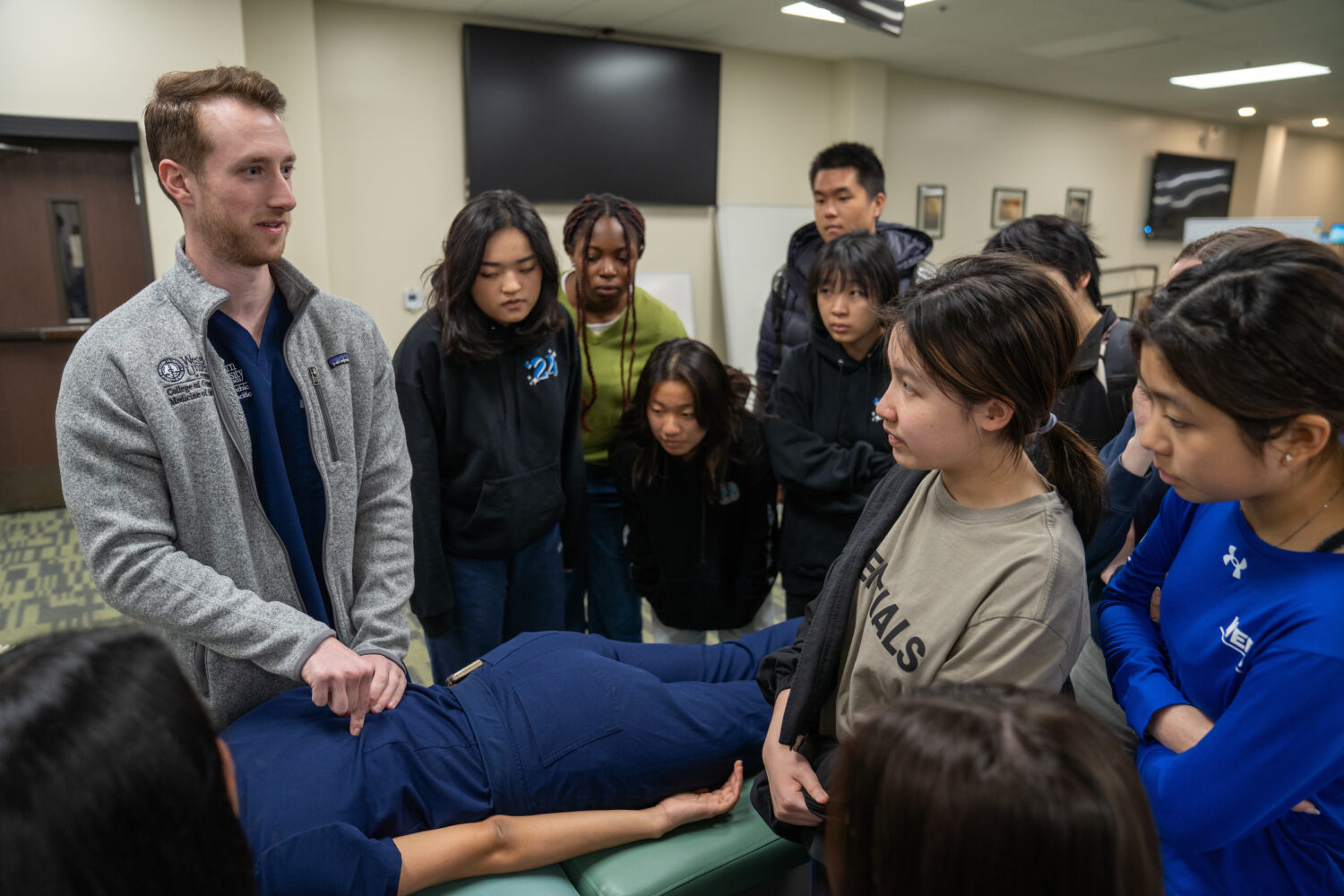WesternU team, international collaborators publish new findings on calpain-1
Western University of Health Sciences researchers, in an international collaboration with colleagues in London, Paris, Tunisia and Belgium, have published a paper demonstrating the role of the calcium-dependent protease calpain-1 in cerebellar ataxia in mice and humans.
The paper, “Defects in the CAPN1 gene result in alterations in cerebellar development and in cerebellar ataxia in mice and humans,” was published June 16, 2016 in Cell Reports. Click here to view the article online: http://www.cell.com/cell-reports/fulltext/S2211-1247(16)30627-1.
WesternU Graduate College of Biomedical Sciences Dean Michel Baudry, PhD, and Professor Henry Houlden, PhD, National Hospital for Neurology and Neurosurgery and UCL Institute of Neurology in Queen Square, London, are the senior co-authors. WesternU collaborators include Yubin Wang, Dulce Lopez, Yan Liu, Ka-Hung Lee, Jeff Seinfeld, Jiandong Sun, Neema Baudry, Jennifer Tran and Xiaoning Bi. The French investigators in Paris include Drs. Alexis Brice, Marie Coutelier, Giovanni Stevanin and Alexandra Durr.
Baudry and his team have studied the role of calpain-1 and calpain-2 in synaptic plasticity, learning and memory and neurodegeneration for three decades. About four years ago, they published a study showing that calpain-1 was neuroprotective and calpain-2 was neurodegenerative.
That paper resulted in Baudry connecting with Dr. Henry Houlden, a neurologist in London, who had a patient with calpain-1 mutation and cerebellar ataxia, which impairs gait and muscle coordination. Another published paper indicated that a calpain-1 mutation in Parson Russell Terrier dogs was also associated with spinocerebellar ataxia. This latest study by Baudry and his collaborators investigates the mechanisms through which calpain-1 mutation/deletion results in ataxia, utilizing calpain-1 knock-out mice, which the Baudry team also shows to exhibit a mild form of cerebellar ataxia.
During the early postnatal period, the brain is still developing and maturing while generating an excess number of neurons. The system then prunes itself and eliminates excessive, non-functional neurons, Baudry said.
“During the postnatal period, there is normal-occurring cell death,” he said. “If you lack calpain-1, you lack this neuroprotective pathway, therefore during this postnatal period you get more cell death that translates into the adult. So adult mutant mice have less neurons in a lot of different brain regions, including the cerebellum and hippocampus, than normal mice.”
In the cerebellum, calpain-1 knock-out mice had 10 percent less granule cells, which is not sufficient to account for ataxia. But they also had many more immature synapses, so the connections between the granule cells and Purkinje cells did not develop normally.
“We’re saying in this paper that null-mutations or deletion in calpain-1 results in an abnormal development of the cerebellum, which is responsible for the ataxia,” Baudry said.
The Baudry team identified the critical target of calpain-1, which is responsible for normally activating a pro-survival pathway, a phosphatase previously shown to be involved in programmed cell death, or apoptosis, called PHLPP1.
The team also demonstrated that if they addressed the lack of calpain-1 through a pharmacological treatment during the first postnatal week, they eliminated all the symptoms. They also accomplished this by crossing the calpain-1 knock-out mice with mice lacking PHLPP1, thus generating double knock-out mice.
“These double knock-out mice developed normally with no ataxia. They do not have excessive loss of cells. They were perfectly normal,” Baudry said. “This really demonstrates that calpain-1 is neuroprotective by degrading PHLPP1, thereby activating a neuroprotective pathway. If you have null-mutations or deletion in calpain-1, you are going to have brain defects, which are linked to excessive neurodegeneration and alterations in postnatal development.”
This study shows that calpain-1 is another gene involved in ataxia, and points out possible treatments for this type of ataxia. In addition, the study raises important flags for pharmaceutical companies attempting to use nonselective calpain inhibitors to treat neurodegeneration.
“If you use an inhibitor that blocks calpain-1 and calpain-2, you are also blocking a neuroprotective pathway,” Baudry said. “You might not see any effect of your calpain inhibitor because you are going to block both calpain-1 and calpain-2, affecting neuroprotection and neurodegeneration. This is why we have started, in partnership with WesternU, a new company, NeurAegis, to develop selective calpain-2 inhibitors as neuroprotective drugs.”



